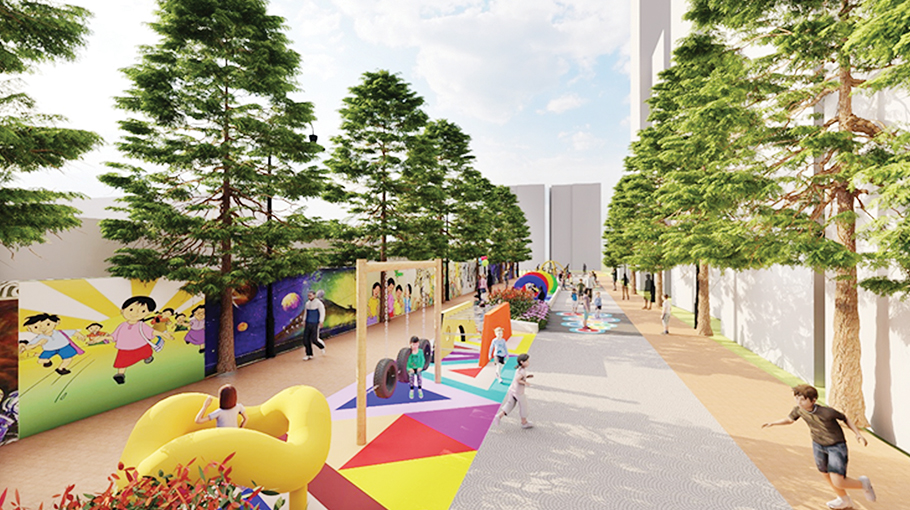City road transformed into public space

An initiative to promote multidimensional use of roads has been taken in Bangladesh for the first time to make roads safe and comfortable for people like in developed countries.
As part of the initiative, road no. 21 of Banani in Dhaka city has been developed for multi-purpose use for pedestrians, children, students and parents. The road has been transformed into a public space.
The newly developed road, which passes behind Banani Bidyaniketan School in Banani neighborhood area, will be inaugurated formally after the upcoming Eid-ul-Fitr, said officials of Dhaka North City Corporation (DNCC).
The DNCC along with the Bloomberg Philanthropies Initiative for Global Road Safety (BIGRS), a multi-country programme on road safety, has developed the road.
Under the initiative of promoting multi-dimensional use of roads, a pilot project was taken up in 2023 with the aim of building a livable and safe area with the introduction of one-way roads in the Banani area.
World Resources Institute (WRI) is one of the programme’s partners. The DNCC and the WRI jointly carried out a study for this project. The research team conducted all the necessary surveys and ground observations.
The study had shown that the road behind the Banani
Bidyaniketan School was not contributing to the formation of a one-way traffic loop. Four plots on the south side of this road don’t require a 40 feet wide road for vehicular access.
On July 6 in 2023, representatives of WRI and BIGRS in a meeting in presence of DNCC Mayor Md Atiqul Islam at the DNCC presented the proposal with a design to transform the road no. 21 of Banani into a public space one-way.
The presentation includes 10 feet wide footpath, 12 feet seating space for people with dedicated play area for children, designated space for planting trees, some infrastructure for sitting and eating, proposals for graffiti on school walls of Banani Bidyaniketan School, construction of ramps for special needs, and setting up billboard to prevent cars and motorcycle parking.
The DNCC Mayor had accepted the proposal and then the-then chief engineer of DNCC Brigadier General Amirul Islam took the necessary initiatives to implement the road as per the design. The construction started immediately after the meeting, said Brigadier General Amirul Islam.
The first challenge for the construction was the existing drainage system and manhole cover positions that couldn’t be replaced but were creating obstacles in placing the walkway and public space at the same level, and leveling up the carriageway for acting as table-top.
After discussing with the-then chief engineer of DNCC, the team revised the design a little on the ground and agreed with the decision of DNCC to keep the carriageway at the same level as the other surrounding roads, but would have control of both sides of the carriageway.
The DNCC approached WRI to rethink the total mobility system of the neighborhood which includes increasing walkability, channelizing vehicular movement by enabling one-way street solutions, utilizing the unused or underused carriageways by parking management and public spaces.
The road is now filled with the sound of people’s footsteps. Children are now playing there safely, while mothers can sit and wait for their children, local people and university students are walking there, officials and employees of various offices are coming there regularly.
The work of murals on the school wall has started with the initiative of Nabila Rahman of ‘Art and Soul’.
Many residents of the Banani area also welcomed the initiative to transform the road no. 21 of Banani into a safer and more pedestrian-friendly public space. Locals hope that the one-way traffic system will further ease congestion.




